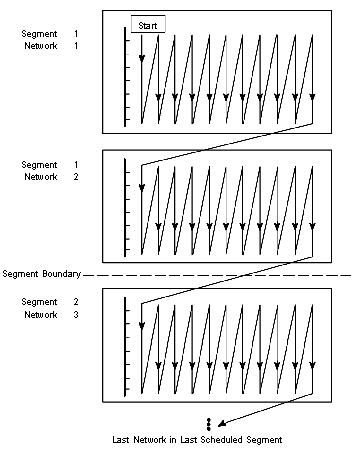The structure of an LL984 program corresponds to a rung for relay switching.
The left power rail is located on the left side of the LL984 Editor. This left power rail corresponds to the phase (L conductor) of a rung.
The right power rail corresponds to the neutral conductor.
A group of connected objects that are not connected to other objects (except for the power rails), is called a rung.
Properties of an LL984 program
In LL984 program:
-
The logic of LL984 is programmed in networks.
-
Several networks are grouped in segments.
-
Each network contains a matrix of 7 rows and 11 columns, where you can place contacts, coils, function blocks etc.
-
LL984 programs are cell oriented, i.e. only 1 object can be placed in each cell.
With the exception of vertical connections. They may coexist with other objects (contact, coils, function blocks).
-
LL984 segments (and also LL984 networks inside segments) are executed in the sequence in which they are displayed in the Structural View of the Project Browser. To change this sequence, you can drag-and-drop LL984 segments or LL984 networks inside the Structural View.
Objects in a network are executed top to bottom, left to right.
-
A syntax and semantics check is performed immediately after the statement is entered. The result of this check is displayed in colored text and objects.
-
Syntactically or semantically incorrect segments or networks can be saved.
NOTE: to detect the first cycle in RUN, the recommended solution is to use %S21 system bit.
The objects of the LL984 programming language help to divide a network into a number of:
These objects can be linked with each other through:
Comments for the logic of the program can be added using
text objects.
The LL984 Editor provides 2 additional features to add function blocks to a network:
Displaying and modifying variable values using:
